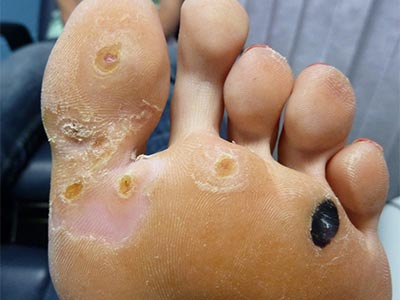Warts are a common skin condition caused by the human papillomavirus (HPV). While they are generally harmless, they can be unsightly, uncomfortable, and difficult to manage. Many people seek professional wart removal to address the issue effectively. Here are a few frequently asked questions about warts and their removal, providing a clear and structured overview of medical options:
What Are Warts?
Wart removal is a necessary part of many people’s medical care. Warts are small, rough growths on the skin that appear when the human papillomavirus (HPV) infects the outer layer of skin. They can develop on various parts of the body, including hands, feet, and even the genital area. Their shape, size, and texture often vary, depending on the type of wart and its location. A strong immune system can sometimes fight off the virus, but warts may persist for weeks, months, or even years without medical treatment.
HPV spreads through direct contact with infected skin or contaminated surfaces. Cuts or scrapes in the skin can provide an entry point for the virus. While not all HPV strains lead to warts, certain strains are more likely to cause them. Personal hygiene and avoiding direct contact with warts can help reduce the risk of contracting HPV.
How Do Doctors Remove Warts?
Doctors offer several medical treatments to remove warts. Each method targets the wart structure to minimize its recurrence. Treatment options include:
- Cryotherapy involves freezing the wart with liquid nitrogen. The extreme cold causes the wart tissue to die. A blister typically forms after the treatment, and the wart falls off within a few days.
- Electrosurgery or curettage involves burning the wart with an electric current before scraping it off. This option is often used for stubborn warts and is performed by a medical professional.
- Cantharidin application involves applying a chemical solution directly to the wart. This causes the skin under the wart to blister, lifting the wart away from the skin once the blister dries.
- Laser therapy uses a focused beam of light to destroy wart tissue. This method is generally recommended for warts that are resistant to other treatments.
- Prescribed medications, such as topical immunotherapy or salicylic acid, may also be used. These treatment options gradually break down the wart’s structure, usually over a series of applications.
Your doctor will determine the best method based on the size, location, and type of wart, as well as your overall health and medical history.
Are Wart Removal Procedures Safe?
Wart removal procedures performed by medical professionals are safe and effective. Doctors use sterilized equipment and follow strict hygiene practices to avoid complications like infections. While mild discomfort or temporary skin irritation may occur after treatment, these symptoms resolve quickly. It’s always helpful to seek professional guidance for wart removal, especially if the wart changes in appearance, spreads, or causes significant discomfort. Some warts may resemble other skin conditions, and a doctor can offer an accurate diagnosis before recommending treatment.
Learn More About Warts
Warts are a highly treatable condition, but professional guidance is key to effective removal. Medical procedures such as cryotherapy, electrosurgery, and laser therapy are safe and targeted options for managing warts. Consulting a doctor enables the best course of action based on the specific type and location of the wart. If you are dealing with warts, speak to a healthcare professional to explore your options and restore your skin health effectively. Proper treatment and early intervention can provide relief and reduce the potential for recurrence.

